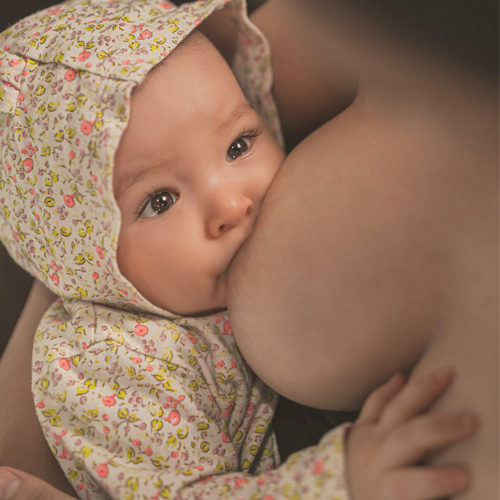Breastfeeding: the first few days

If you are a new mom, breastfeeding will likely become a big part of your life during the next 6-24 months. Learning about it may help you feel more confident when you start breastfeeding Your Child.
Why adequate breastfeeding during the first few days is important
Protection against infections: In the first few days after birth, your breast produces a colostrum fluid, which is rich in immunoglobulin and helps prevent infections. Colostrum is thick, very concentrated, and usually golden yellow. Your Child will only feed a small amount (say a teaspoonful) each session, which means you may have to feed your child as often as every 1 to 3 hours.
Increasing milk production: Frequent breastfeeding during the first few days stimulates full milk production. As Your Child sucks, the muscles in your breast squeeze milk towards your nipple — a phenomenon called the let-down reflex. You may get a tingling sensation during sucking, and when your milk lets down, you will notice Your Child switching from sucking to swallowing.
Sometimes, the milk let down maybe too much for your baby to swallow, causing Your Child to cough and splutter. When this happens, rest your baby for a while and try again. Or ask your mother or a lactation consultant for guidance. Conversely, suppose your baby often falls asleep during the session. In that case, it could be that Your Child is not latched correctly onto the nipple to suck the milk efficiently.
Preventing breast engorgement: Another benefit of adequate breastfeeding in the first days is that it reduces your risk of breast engorgement. If Your Child is not getting all that milk out of your breasts, they may begin to feel engorged and painful.
What to expect in the first few days
In the first few days, you and Your Child will be getting to know each other, and it may take a while for you both to understand what works. While some moms may take time to adapt, virtually every mom will eventually produce enough milk for her baby. Generally, here are what to expect in the first few days:
Day 1: Your Child may be feeling sleepy after birth, but it’s better for babies to feed within 30 minutes after birth. If Your Child feeds well immediately after delivery, your little one may sleep for a good stretch.
Day 2: Your baby may want to feed quite often, perhaps every hour or two, and may have some green/black poop and two wet diapers.
Day 3: As milk flow begins to increase, Your Child will start having fewer and longer feeds—the poo changes to a greenish-brown color.
Day 4: Your Child may be feeding every 2-3 hours. The poo will be mustard in color, and your baby may wet four diapers in a day.
Day 5: Milk flow increases to about 500-800 ml per day. Your Child may poo three to four times. You may get five or more wet diapers.
Day 6: Your Child feeds longer in each feeding session, and you should expect more wet diapers.
How often should I breastfeed Your Child?
You should feed Your Child as often as the little one wants, but it may not be easy to know when Your Child is hungry. As a rough guide, feed your baby at least 8 to 12 times every 24 hours during the first few weeks. There is no such thing as overfeeding a breastfed baby.
Here are some signs to tell that Your Child may be hungry:
- Restlessness
- Sucking the fingers
- Making murmuring sounds
- Turning head and opening mouth (rooting)
When you notice any of these signs, try to feed Your Child immediately before your little one starts crying. It’s challenging to feed a crying baby!
Verified:
Dr. Piyawut Kreetapirom, MD. license no. 41578 (31 March 2021)



